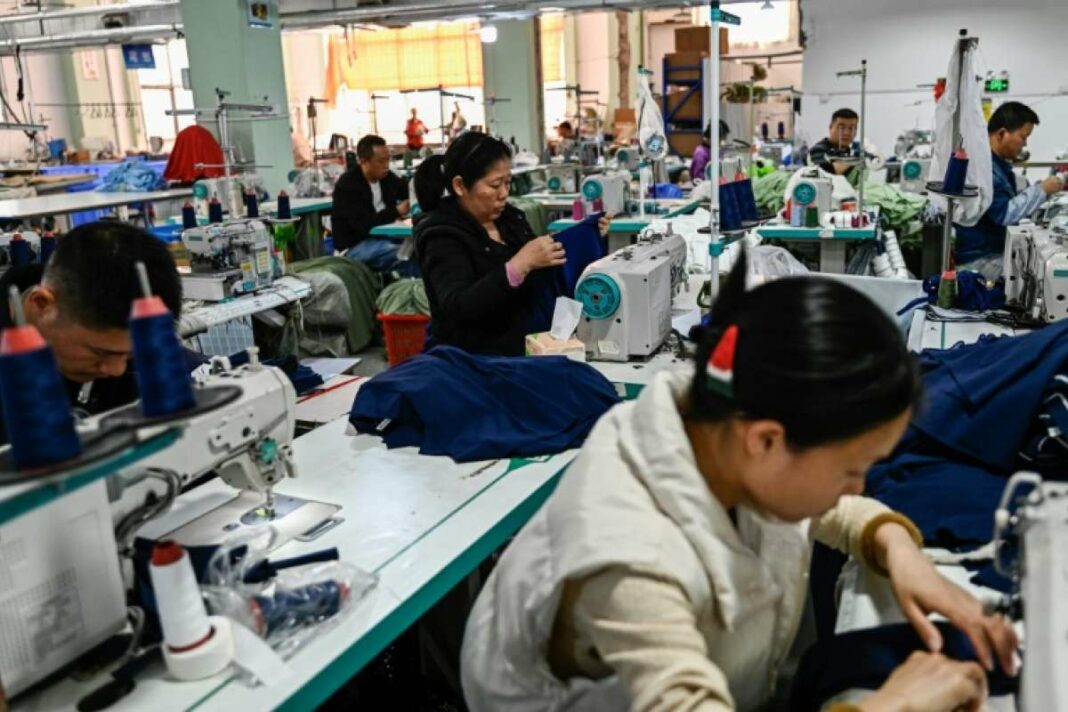In China’s manufacturing sector, factory owner Andy Xiao faces challenges due to new U.S. tariffs, impacting exports of synthetic leather. While some suppliers have moved operations to Southeast Asia to avoid these tariffs, Xiao remains cautious due to potential risks. Meanwhile, factories in Guangzhou thrive on partnerships with fast-fashion brands. Despite the tariffs and economic slowdown in China, textile factory managers express optimism about the industry’s future, relying on continued demand from the U.S. market.
Concerns Amidst Rising Tariffs in China’s Manufacturing Sector
In the bustling industrial hub of China, factory owner Andy Xiao is feeling the strain of new tariffs imposed by the U.S. government. Since President Trump resumed his position in January, he has targeted various nations, including China, by implementing a 10% tax on imported goods. This initiative could potentially disrupt Sino-American trade, impacting billions of euros in commerce. The situation is even more precarious if Trump follows through on his threats to escalate these tariffs further.
For Andy Xiao, the tariffs have already created significant challenges. His factory in Dongguan specializes in producing synthetic leather for shoe manufacturers, many of whom export their products to the U.S. This reliance on exports places him in a vulnerable position, especially as Trump’s administration seeks to alter the landscape of international trade. “The pressure is mounting on us here in China, and factories are feeling it too,” Andy Xiao expressed. While he acknowledges the anxiety surrounding possible future tax hikes, he admits, “this is a matter of U.S. national policy, and there’s little we can do.”
Shifting Production Strategies and the State of the Textile Industry
In recent years, many Chinese suppliers in Dongguan have relocated their operations to Southeast Asia to minimize costs and sidestep tariffs on products labeled ‘made in China.’ However, Andy Xiao has chosen not to follow this trend, deterred by reports of challenges faced by companies that made the leap, such as delayed payments. Just a short distance away in Guangzhou, factories are thriving, producing apparel for American consumers eager for online bargains. These workshops have seen an increase in orders, thanks to their partnerships with fast-fashion platforms like Shein and Temu, which have gained significant traction in the U.S. market.
These companies have thrived in part due to a loophole that allows packages valued under $800 to enter the U.S. tariff-free. Although they continue operations as usual for the time being, Trump’s administration is reportedly preparing to impose an additional 10% tariff on these goods. Factory manager Mr. Zhu, who oversees production for Shein, remains “relatively optimistic” about the future of his business. “The U.S. will certainly not start manufacturing their own clothing domestically,” he notes. “They rely heavily on production from Southeast Asia and China, which suggests a positive outlook for the textile industry.”
China has firmly opposed the wave of tariffs from the U.S., responding with its own taxes on select American imports and warning that further measures may be implemented to safeguard its economic interests. The Asian powerhouse is currently grappling with an economic slowdown, exacerbated by a real estate crisis, weak consumer spending, and high youth unemployment. Nevertheless, export-focused factories in southern China continue to provide vital employment for millions. In a region known as ‘Shein City,’ workers are downplaying the immediate effects of U.S. tariffs. “Production is at full capacity, so our focus remains on that,” summarizes Mr. Peng, a colleague of Mr. Zhu. Despite the trade tensions, Zhongshan textile factory manager Mr. Zhong expresses confidence in the government’s ability to navigate these challenges. “I believe our government will respond effectively and find a solution,” he states before returning to work alongside his team.
